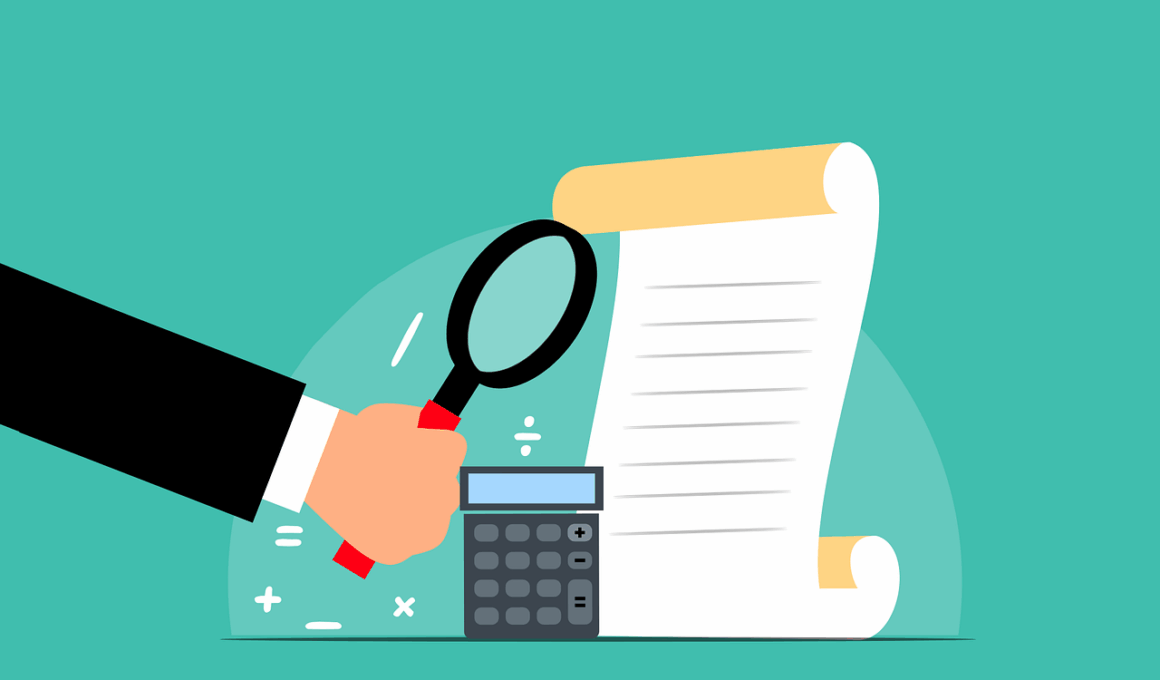Using Data Analytics in Government Auditing
Data analytics has emerged as a powerful tool in various fields, including government auditing. With the increasing complexity of government operations and expenditures, auditors are seeking innovative ways to enhance their efficiency and effectiveness. The use of data analytics allows auditors to analyze large volumes of data, identify patterns, and uncover discrepancies more quickly than traditional manual methods. This approach enables auditors to focus on high-risk areas and prioritize their audits accordingly, which can lead to significant improvements in accountability and transparency in government financial management. By integrating data analytics into their methodologies, auditors can better assess compliance with regulations and policies. This innovative application not only facilitates a more detailed analysis but also enhances the auditor’s ability to provide valuable insights. Increasingly, government agencies are investing in training and tools that enable auditors to harness data analytics effectively. Moreover, the continuous advancements in technology mean that auditors must stay updated with new analytical methods and software to maximize its potential and still remain diligent in their duties.
Benefits of Data Analytics in Auditing
The benefits of utilizing data analytics in government auditing are manifold and profound. First, it enhances efficiency by allowing auditors to analyze extensive datasets rapidly, which significantly reduces the time spent on manual testing. Second, it increases the accuracy of audits by minimizing human error that might occur with traditional techniques. By identifying anomalies and trends through sophisticated algorithms, auditors can focus their attention on significant issues that require immediate action. Furthermore, data analytics contributes to the predictive capabilities within auditing. This means auditors can forecast potential risks and issues, allowing for proactive measures rather than reactive ones. Additionally, the integration of data analytics into audits fosters greater accountability and transparency within government entities. By pinpointing discrepancies and spotting unusual transactions, these tools can help safeguard public funds effectively. As organizations prioritize data-driven approaches, auditors become more equipped to provide evidence-based recommendations for improvements in operational efficiency and compliance. Hence, adopting data analytics is not just a trend, but a necessary evolution of government auditing practices.
Challenges in Implementing Data Analytics
Despite the numerous advantages that data analytics offers to government auditing, there are several challenges that must be acknowledged. One significant barrier is the lack of technical expertise among auditors. Many auditors may be accustomed to traditional auditing techniques and might not have received sufficient training in data analysis. This necessitates comprehensive training programs to equip auditors with the necessary skills to utilize these tools effectively. In addition, there may be resistance to change within organizations. Transitioning to a data-driven approach can often create discomfort among staff, as it requires altering established workflows and practices. Moreover, concerns regarding data privacy and security cannot be overlooked. Government agencies must ensure that sensitive information is safeguarded against breaches while using analytics tools. Additionally, integrating existing datasets from various sources can pose logistical challenges. Compatibility issues and differing data formats can hinder the seamless application of analytics. Therefore, overcoming these challenges is vital to fully realize the potential that data analytics holds within government auditing, ensuring that agencies can enhance their oversight functions effectively.
Future Trends in Government Auditing
The future of government auditing is expected to be heavily influenced by advancements in data analytics and technology. As the auditing landscape evolves, auditors will increasingly rely on artificial intelligence (AI) and machine learning to interpret vast datasets more efficiently. These technologies will enable auditors to detect anomalies and risks at an unprecedented scale and speed. Additionally, the integration of real-time data analysis will allow agencies to respond to issues as they arise rather than after the fact. This agility will enhance accountability and deter potential fraud or mismanagement. Moreover, the trend towards data visualization will make complex information more accessible to stakeholders, facilitating informed decision-making. Collaborative tools will also play a crucial role, allowing auditors to work together seamlessly towards shared goals regardless of geographical constraints. Furthermore, as technology advances, we can expect regulatory frameworks to adapt and evolve, reinforcing the need for ethical practices and standards in data use. Ultimately, embracing these trends will empower auditors to provide invaluable insights that drive improvements within government operations, thereby enhancing public trust and service delivery.
Case Studies on Effective Use
Several case studies illustrate the successful implementation of data analytics in government auditing, showcasing its transformative potential. One such example includes the Office of the Inspector General, which utilized predictive analytics to identify potential fraud in healthcare claims. By analyzing historical claims data, they developed algorithms that flagged irregularities, leading to numerous investigations and recoveries of misallocated funds. Another case involved a state auditor who embraced data analytics to improve Medicaid eligibility verification. By cross-referencing applicant data against multiple agencies, the process allowed them to eliminate duplicate enrollments and ensure that only eligible beneficiaries received services. Moreover, various local governments have adopted data analytics tools to enhance transparency in procurement processes, effectively mitigating the risk of corruption and ensuring fairness. These case studies highlight that when strategically implemented, data analytics not only fosters accountability but also optimizes resource allocation. The growing interest in these success stories indicates a shift towards embracing innovation, as more agencies recognize the value of data-driven decision-making to uphold public trust and fulfill their fiduciary responsibilities.
Conclusion
In conclusion, the integration of data analytics in government auditing signifies a paradigm shift, enabling auditors to enhance the effectiveness of their oversight roles. By providing tools that improve efficiency, accuracy, and transparency, data analytics meets the growing demands for accountability in public financial management. Although challenges exist in adopting these technologies, the benefits they bring to the auditing process are invaluable. The future of government auditing will likely see more sophisticated applications of analytics, further reinforcing the need for auditors to continually evolve their skills and methodologies. Through ongoing training and embracing technological advancements, auditors can better serve their communities by promoting responsible governance and effective resource management. Ultimately, the utilization of data analytics empowers auditors to fulfill their critical roles as guardians of public trust. As government entities adapt and refine their approaches to auditing, the focus will continue to shift towards leveraging data for improved decision-making and strategic planning. This is a crucial step towards a more transparent and accountable government, benefitting society at large.
Call to Action
As we move forward, stakeholders in government auditing should prioritize the investment in data analytics tools and training. It is imperative that government entities recognize the transformative potential of leveraging these technologies effectively. By fostering an environment of continuous learning and collaboration, agencies can enhance their auditing processes while addressing the challenges tied to data privacy and staffing. Public sector organizations must develop comprehensive strategies that include clear guidelines for ethical data use, ensuring that privacy is maintained while maximizing the benefits of analytics. Furthermore, collaboration between auditors, data scientists, and IT specialists can create robust frameworks that address both the technical and operational demands of analytics. It is time to advocate for a culture that embraces change and innovation in auditing practices. Public transparency and accountability depend on our willingness to adapt and leverage data analytics to safeguard public resources. Therefore, let us collectively commit to advancing these practices within government auditing to promote effective oversight and improvement of public services. Together, we can drive a significant impact that resonates within our communities.
Next Steps for Optimization
With the insights gained from the integration of data analytics in government auditing, next steps must focus on optimizing these systems for deeper insights. Continuous monitoring and evaluation will play a crucial role in ensuring the effectiveness of data analytics initiatives. Regular assessments should be conducted to determine if the tools and methods employed remain relevant and effective in detecting risks and anomalies. Furthermore, feedback from auditors who utilize these systems can provide critical insights into potential improvements. Utilizing advanced technologies such as blockchain may also enhance data integrity within auditing processes, ensuring that all transactions are traceable and verifiable. Developing partnerships with tech companies can further enhance capabilities, allowing agencies to access cutting-edge tools and resources. As data analytics evolves, it is crucial to stay updated on upcoming trends and methodologies. Therefore, investing in knowledge-sharing forums and workshops will encourage skill enhancement among auditors. Through such collaborative learning environments, the potential for innovation within government auditing can be fully realized, leading to enhanced operational effectiveness and greater public trust in governmental financial management.


